![]()
![]()
![]()
Use LEFT and RIGHT arrow keys to navigate between flashcards;
Use UP and DOWN arrow keys to flip the card;
H to show hint;
A reads text to speech;
35 Cards in this Set
- Front
- Back
- 3rd side (hint)
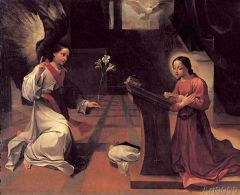
|
Annunciation Lodovico Carracci 1583 |
|
|
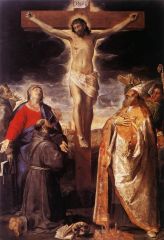
|
Crucifixion with virgin and saints Annibale Carracci 1583 |
|
|
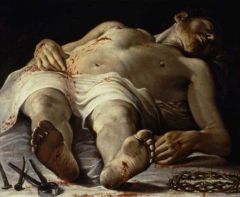
|
Dead Christ Annibele Carracci 1583 |
|
|

|
Madonna of the Bargellini Lodovico Carracci |
|
|

|
Loves of the Gods Annibale Carracci 1601 Farnese Palazzo |
|
|
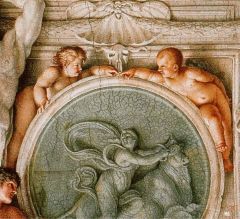
|
Europa and the Bull Annibale Carracci 1601 |
|
|
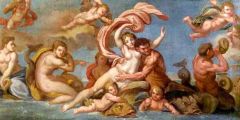
|
Venus and Triton Annibale Carracci 1601 |
|
|

|
Venus and Anchises Annibale Carracci 1601 |
|
|
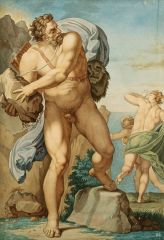
|
Polyphemus Attacking Acis and Galatea Annibale Carracci 1601 |
|
|
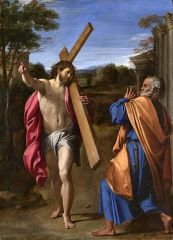
|
Domine, Quo Vadis Annibale Carracci 1602 |
|
|
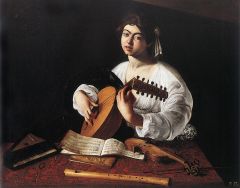
|
Lute Player Caravaggio 1596 |
|
|
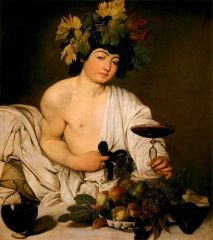
|
Bacchus Caravaggio 1596 |
Bacchus as a fleshy effeminate youth, profuse locks crowned with profusely fruited grape vine wreath, eyebrows outlined, wearing shirt pushed off right side, seated against couch padded with cushion and covered by his cloak, looking at spectator, holding out red wine filled glass held in left hand, while loosening knot of sash with right hand; on table before him, vessel of wine and basket of fruits: pears, apples, white and red grapes, figs. Friedlaender writes that Bacchus' full shirt is pushed off the right shoulder in toga fashion "all'antica." His regular fleshy features bring to mind the sensuous idealism of certain Hadrianic representations of Antimous or Bacchus.Posner (in AQ ) points out that the artist's representation of Bacchus conforms with the traditional descriptions of him. For Ovid in Metamorphoses (III) Bacchus is an effeminate boy whose weapons are scented locks and soft garlands. Vincenzo Cartari in Imagini delli Dei de gl'Antichi describes Bacchus as delicate, soft, and rubicund of face.The androgynous character of this artist's figures is central to his intended aesthetic statement. His youths do not merely address themselves to the spectator, they solicit him. Bacchus does so with uninhibited openness and unmistakable intent. Holding the spectator with his languorous gaze, he proffers a glass of wine. In the foreground is a basket of tempting fruits. Bacchus is already half-undressed, and with his right hand he begins to loosen the knot of the sash around his waist. The picture urges orgiastic surrender to the delights of the senses.A basket of fruit is not an uncommon symbol of sexual gluttony. Figs are a traditional symbol of lust. Pears and apples are both fruits of Venus. |
|
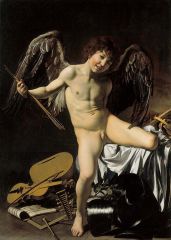
|
Love Conquers All Caravaggio 1602 |
|
|
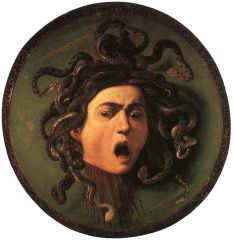
|
Medusa Caravaggio 1596 |
|
|
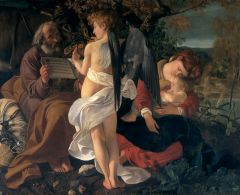
|
Rest on the Flight Into Egypt Caravaggio 1587 |
|
|
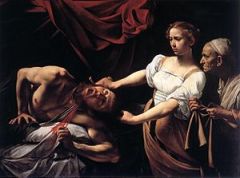
|
Judith Beheading Holofernes Caravaggio 1599
|
|
|
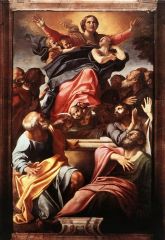
|
Assumption of the Virgin Annibele Carracci 1601 |
|
|
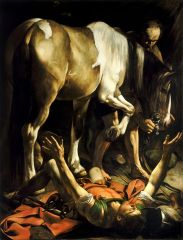
|
Conversion of Saint Paul Caravaggio 1601 |
|
|
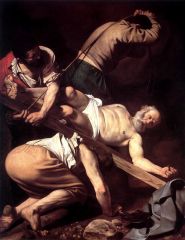
|
The Martyrdom of Saint Peter 1601 |
Commissioned by Cardinal Tiberio Cerasi |
|
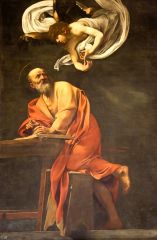
|
Saint Matthew and the Angel 1602 |
|
|

|
Calling of Saint Matthew Caravaggio 1610 |
|
|
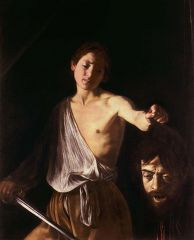
|
David with the Head of Goliath Caravaggio 1610 |
|
|
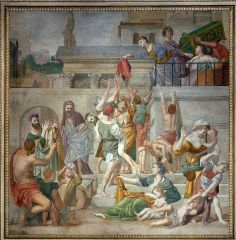
|
Saint Cecilia Distributing Alms to the Poor Domenichino 1617 |
21 people on the ground minus 4 above |
|
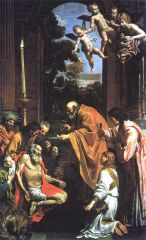
|
Last Communion of St. Jerome Domenichino 1614 |
|
|

|
Diana Hunting Domenichino 1617 |
|
|

|
Modonna and Child with Saints Bartholomew Lanfranco 1616 |
|
|
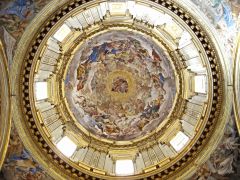
|
Paradise Lanfranco 1641 |
|
|

|
Massacre of the Innocents Guido Reni 1610 |
|
|

|
Aurora Guido Reni 1613 |
|
|
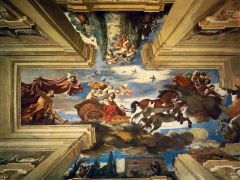
|
Casino Ludovisi Guercino 1621 |
|
|
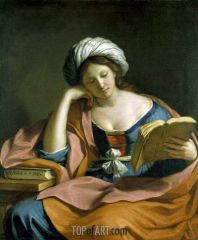
|
Libyan Sibyl Guercino 1666 |
|
|
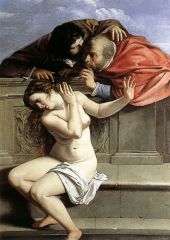
|
Susanna and the Elders Artemisia Gentileschi 1610 |
|
|
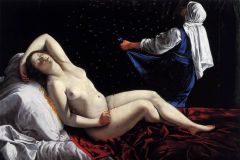
|
Danae Artemisia Gentileschi 1612 |
|
|
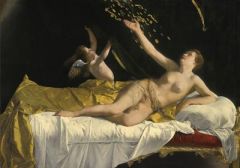
|
Danae Orazio Gentileschi 1621 |
|
|
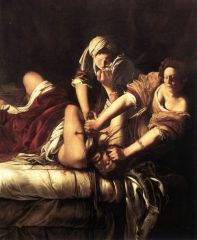
|
Judith and Holofernes Artemisia Gentileschi 1620 |
|

